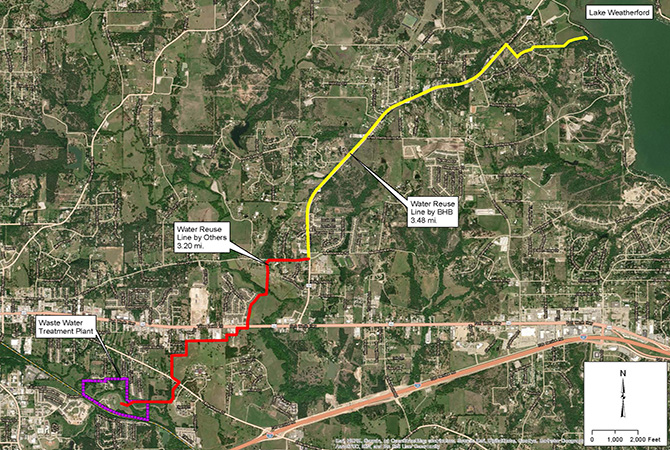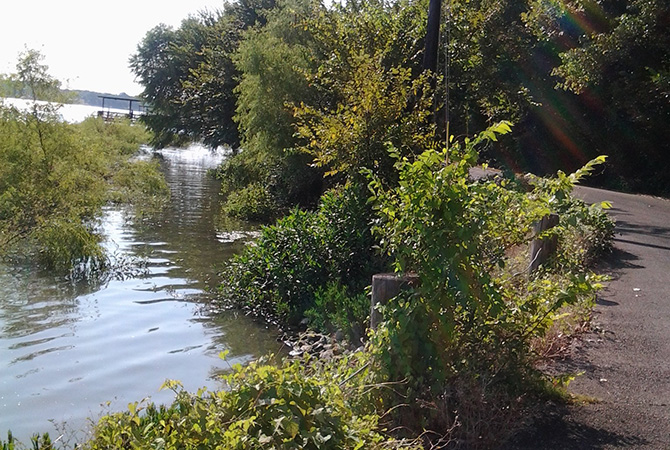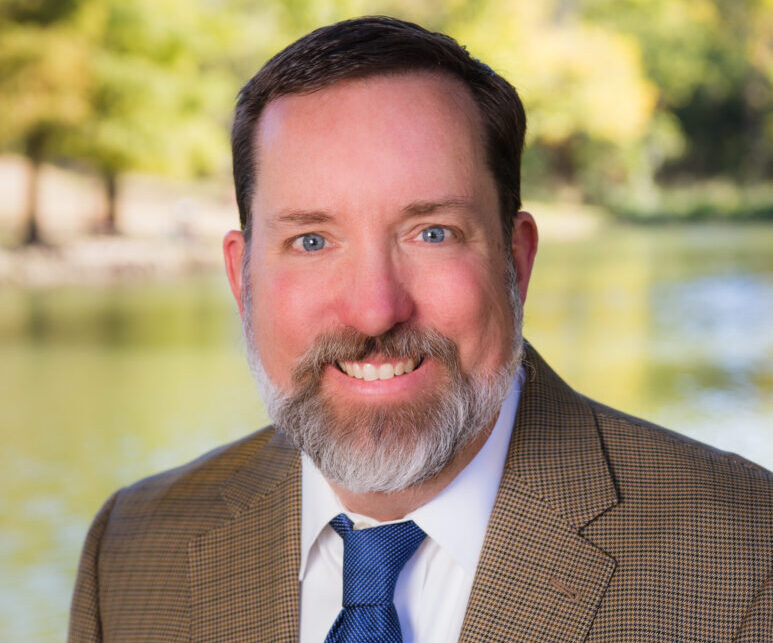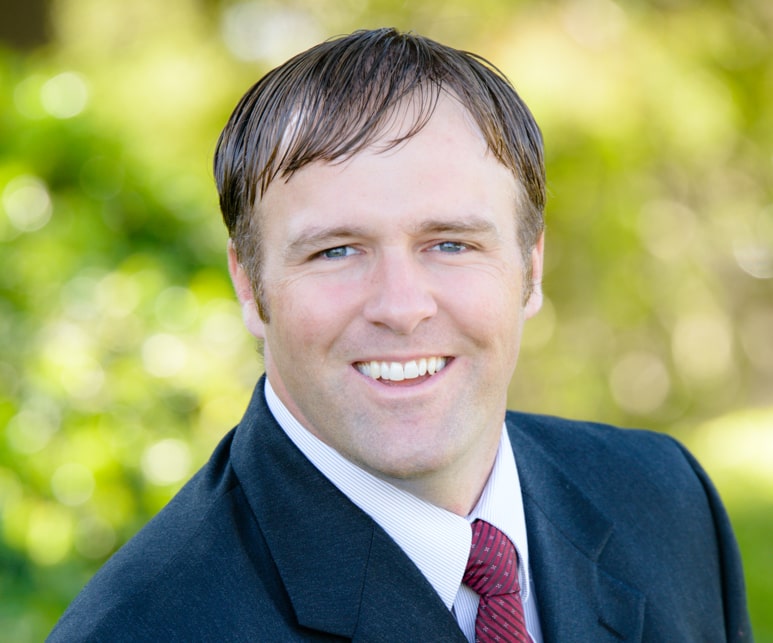Weatherford Water Reuse Pipeline
Weatherford, TX
Expertise
- Municipal
Services
- civil engineering

The City of Weatherford’s water needs are largely met by surface water from Lake Weatherford. This water is provided by rain falling on the Clear Fork of the Trinity River upstream of the Lake Weatherford Dam or water pumped to Lake Weatherford from Lake Benbrook. The City of Weatherford recognized that it could utilize treated effluent from its wastewater treatment plant and provide a more secure and less expensive source of water by pumping from the treatment plant rather than from Lake Benbrook. In addition to allowing Weatherford to grow with greater water independence, this project will also assist in keeping Lake Weatherford at a more constant elevation, even in late summer.
BHB was selected by the City of Weatherford to design the north 3.5 miles of the 16” water reuse line, as well as the outfall site design. This is an ongoing project, and to date, BHB has completed a route evaluation, received approval for the recommended route, obtained survey Right Of Entry (ROE) for the private portions of the route from the property owners, and completed the design survey for the project. We are currently preparing the preliminary design for the project, which will include air release and blow off valves, and inline flow and pressure reduction sleeve(s). BHB will be coordinating with private property owners, obtaining TX-DOT permits and working with utilities along the route, as well as coordinating with the City and the engineering firms responsible for the design of components at each end of the BHB segment of the project.
Pictured: The outfall location for the Weatherford Water Reuse Pipeline project

Key People
-

Shannon L. Nave, PE, CFM

Shannon L. Nave, PE, CFM
Principal | Senior Civil Engineer
Shannon Nave’s desire is to use engineering to leave the world a better place than he found it and to help man live with nature and with each other. His extensive experience includes engineering design and project management for a significant variety of civil and water resource projects.
His wide-ranging experience in working for both consulting firms and as a municipal staff engineer includes flood studies, dam design and repair, expert witness testimony, and general civil projects encompassing designs for residential, commercial, educational, utility, and Capital Improvement Projects (CIP).
Shannon’s research and master’s thesis on storm water flow in streets and gutters led to UTA receiving a $450,000 grant from TxDOT to build a street section in the basement of the UTA Nedderman Hall to run full-scale tests.
Shannon lives in Parker County with his wife Anna and two sons; he enjoys cooking, reading, and working with the Cub Scouts.
Education
Tarleton State University:
Bachelor’s Degree/1996/Hydrology and Water Resources
University of Texas at Arlington:
Master’s Degree/2000/Civil Engineering: Water Resources -

Scott Crawford, PE

Scott Crawford, PE
Associate | Senior Civil Engineer
Although Scott Crawford grew up with dreams of becoming a veterinarian, his aptitude for math became apparent at a young age, sealing his destiny to become an engineer like his father. A civil engineer and project manager at BHB since January of 2017, Scott brings 15 previous years of experience in North Central Texas to the company. His specialties include water and wastewater design, utility coordination and permitting, roadway design, private multifamily development, construction administration, and municipal impact fee calculation.
Outside of work, Scott enjoys cooking and building things. He also enjoys spending time with his wife, two kids, and dogs – preferably at the beach. As a graduate of Texas A&M he loves to visit College Station, and occasionally moonlights as Batman (but you didn’t hear that from us). When asked for words to live by, he quotes Eleanor Roosevelt: “The purpose of life is to live it, to taste experience to the utmost, to reach out eagerly and without fear for newer and richer experience.”
Education
Texas A&M University:
Bachelors/2002/Civil Engineering



